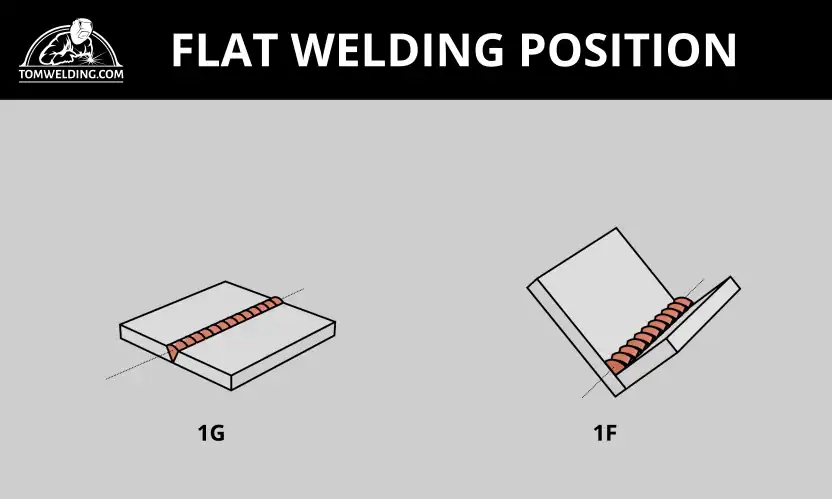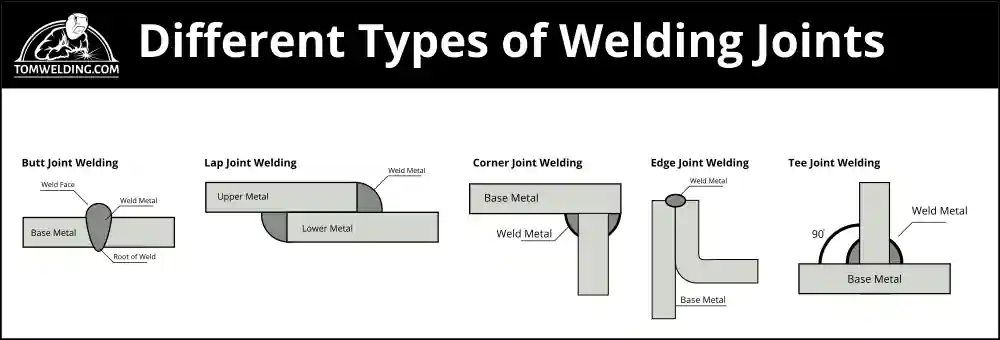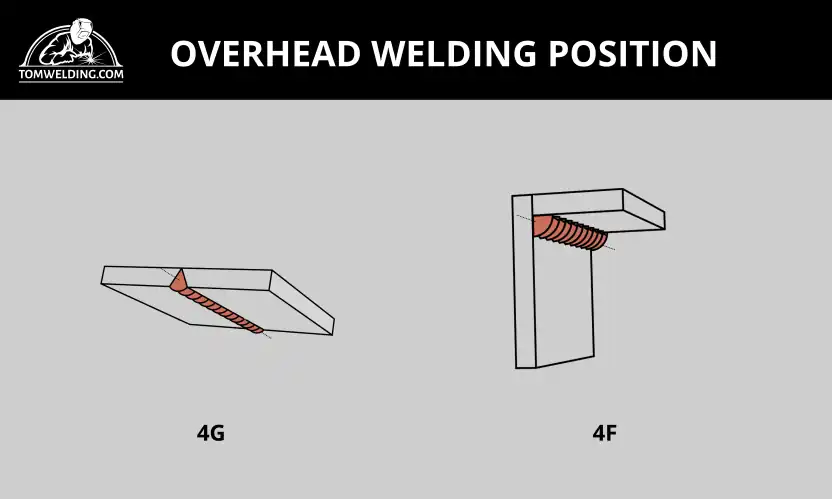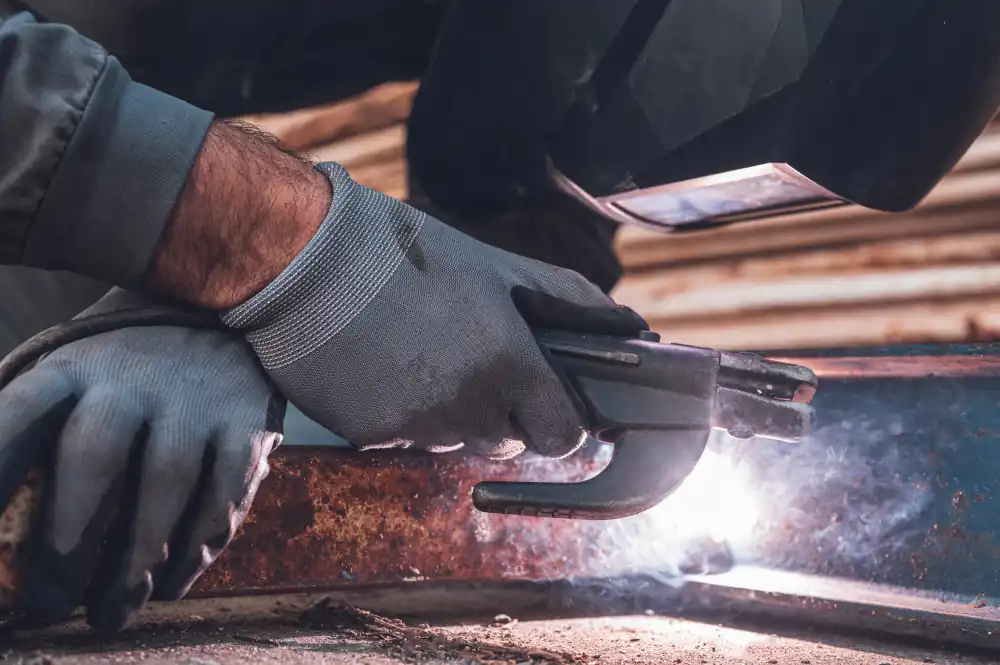A flat welding position is a foundational welding position that forms the cornerstone of many industrial and manufacturing processes.
Recognized for its horizontal orientation, this technique is not just about the position of the weld but involves various other facets, from material considerations to equipment handling.
In this article, we delve into the myriad aspects of flat welding, from its basic principles to the intricate nuances that define its application.
Also read basic welding position
Position of Flat Welding
The flat welding position, often referred to as the “1G” position in welding philosophy, represents the horizontal orientation in which the welding process occurs.
Such a position offers considerable advantages, especially in controlling the molten pool and ensuring consistent weld quality. When setting up for a flat weld, many welders prefer a sturdy welding bench.
This platform provides stability, ensuring the workpiece is secure, which is vital for achieving the desired weld orientation. In the realm of professional welding, certification events often test welders on their proficiency in the flat position, as it’s an essential skill that demonstrates their foundational knowledge and expertise.
Both welders and supervisors typically share the responsibility of ensuring the correct position throughout the welding process.
Orientation of Flat Welding Position
Orientation in welding refers to the alignment and angular setup of the weld joint.
For a flat weld, this means the weld should be executed from the upper side, ensuring the weld face remains approximately horizontal.
Proper alignment is crucial as it affects weld penetration, strength, and overall quality. When welds undergo inspection, inspectors pay special attention to the joint’s orientation. They check its alignment, verify the angular setup, and assess its conformity to specified joint geometry.
In a workshop setting, the location of the weld plays a pivotal role in ensuring proper orientation. Proper lighting and ventilation allow the welder to maintain the joint’s visibility, thus ensuring safety and precision.
Ensuring the correct orientation often rests with the welder, but it’s not uncommon for supervisors or inspectors to verify this alignment in professional scenarios.
Application of Flat Welding Position
Flat welding finds its application primarily in scenarios like plate welding or when components can be conveniently positioned flat.
Its straightforward nature ensures consistent weld quality, penetration, and speed. Key equipment for flat welding applications includes welding plates, electrodes, welding machines, and protective gear. All these tools and materials play a vital role in ensuring that the welding process goes smoothly.
In an industrial or manufacturing setup, the production cycle heavily influences flat welding applications. Efficient applications can dictate the pace of assembly, ensuring projects stay on schedule.
While the onus of executing a flat weld rests on the welder, overseeing the process and ensuring standards are maintained is often the responsibility of production managers or welding supervisors.
Ease
Flat welding’s relative ease, especially for beginners, sets it apart from other welding positions. Its horizontal orientation simplifies the learning curve, offering a more accessible entry point for those new to the craft.
The equipment, when well-maintained and properly calibrated, can further enhance this ease. Devices such as welding plates and electrodes, if in good condition, ensure the welder has fewer challenges to overcome during the process.
Training sessions tailored for flat welding often focus on harnessing this ease, equipping trainees with the right techniques and knowledge. It’s no surprise that many beginner welders often find flat welding the most approachable technique during their learning phase.
Gravity Effect
Gravity plays a pivotal role in the realm of flat welding positions. The very physics of welding emphasizes its influence, especially when controlling the molten pool.
In a flat welding position, gravity assists, ensuring that the molten metal remains in place and forms a uniform weld bead. This gravitational effect stands in stark contrast to other welding positions where the force can work against the welder, leading to inconsistencies like sagging.
When studying the solidification of metal during welding, experts often note the uniformity achieved in flat welding, thanks to gravity.
In order to continuously improve welding techniques and results, physicists, metallurgists, and experienced welding professionals typically undertake such studies.
Material Thickness
Material thickness holds significant importance in the flat welding position. Metallurgical principles dictate that thickness can directly impact heat distribution and penetration.
For a flat weld to be effective, the material’s consistent thickness is essential. Tools like calipers and ultrasonic thickness gauges help welders ensure this consistency.
During quality checks, the thickness is evaluated at various points to ascertain the uniformity of the weld. Discrepancies can signal improper welding techniques or even material deformities.
Ensuring the correct material thickness and its consistent application often becomes the collective responsibility of welders, inspectors, and supervisors.
Equipment Handling
The handling of welding equipment is paramount to the success and safety of flat welding operations. Best practices, derived from years of industry experience, emphasize regular maintenance, calibration, and safe handling of all welding tools and machines.
Essential equipment like welding machines, electrode holders, and wire feeders requires meticulous care to guarantee both functionality and safety.
Equipment maintenance and servicing events ensure that any wear or potential faults in the tools are addressed promptly.
This maintenance not only ensures consistent welding quality but also minimizes potential downtime. The responsibility of equipment handling usually rests on the welder, but maintenance teams and workshop supervisors play a crucial role in regular servicing and upkeep.
Safety Protocols
Safety remains paramount in any welding operation, and flat welding is no exception. Safety protocols and philosophies focus on the meticulous use of protective gear, maintaining proper ventilation, and strictly adhering to guidelines.
Essential safety equipment includes welding helmets, fire-resistant clothing, gloves, and safety boots. In addition, ensuring a well-ventilated workspace is crucial to safeguarding welders from harmful fumes.
Safety drills, often conducted in professional environments, reiterate these protocols, emphasizing emergency procedures and the importance of protective gear.
While every welder must prioritize their safety, the broader responsibility of implementing and overseeing safety protocols often lies with safety officers and workshop managers.
In conclusion, the flat welding position, while seemingly straightforward, encompasses a range of considerations, from equipment handling to safety protocols.
Each aspect, when given due attention, ensures that the welding process is both efficient and safe. As the industry evolves, so will the nuances of flat welding, but its foundational principles will remain ever-important.
You can also learn about horizontal welding position






